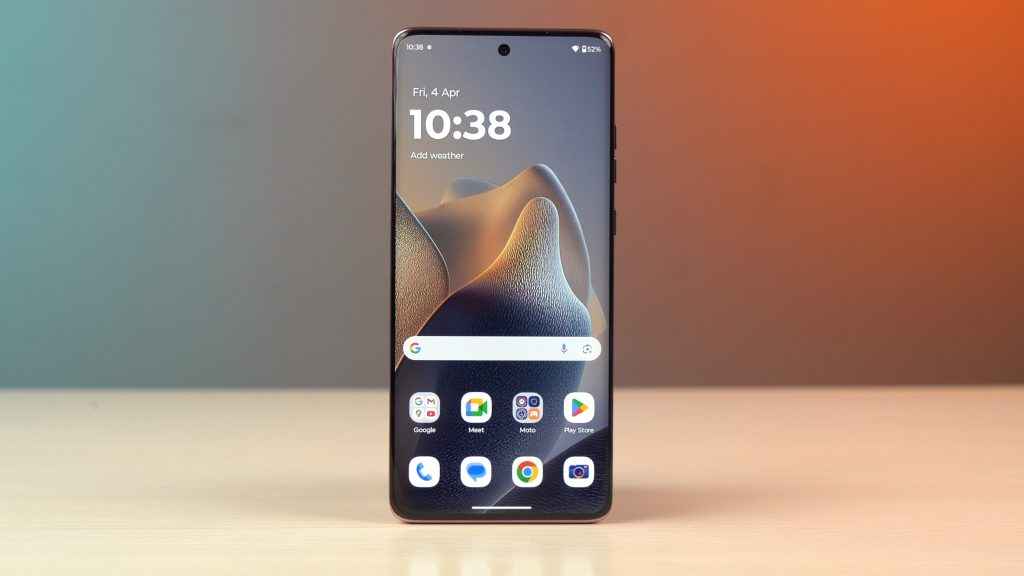How Motorola Is Quietly Taking Over India’s Smartphone Market

We recently sat down for a candid conversation with Shivam Ranjan, Head of Marketing at Motorola APAC, to talk about the company’s remarkable growth trajectory and vision for the Indian market. With a staggering 135.9% year-on-year growth that has pushed Motorola’s market share from 2.7% to 6% in India as per IDC, the brand is now setting its sights on breaking into the country’s top three smartphone makers within the next two years.
Balancing Hardware and Experience

The recently launched Edge 60 Fusion (review) represents Motorola’s philosophy of democratizing premium features while maintaining competitive pricing. When questioned about the decision to use MediaTek’s Dimensity 7400 chipset instead of a Qualcomm alternative, Ranjan defended the choice: “It’s the world’s first and India’s first [phone with this chipset]. We found that 7400 is a very well-balanced 4 nanometer chipset with good strong performance.”
He emphasized that the choice wasn’t a compromise but an upgrade, delivering approximately 20% better performance than the previous generation Edge 50 Fusion. The strategy reflects Motorola’s focus on creating “well-rounded” devices rather than simply hitting price points.
During the interaction, Ranjan repeatedly returned to Motorola’s dual focus on hardware specifications and what he termed “lifestyle tech” which is more than just spec-sheet improvements.
The AI Differentiation
Motorola’s approach to AI is its role as “a ubiquitous layer” that works across the entire device experience.
“We are not building a competitive AI assistant to other AIs,” Ranjan explained. “It is an overall layer which will become a ubiquitous touch point for consumers for whatever they want to do on their device.”
The company’s AI strategy is organized into three buckets: capture (imaging experiences), create (generative AI features), and assist (features like “remember this” and “catch me up”). Notably, Motorola’s implementation is designed to work with third-party AI assistants rather than compete with them, potentially calling Gemini or other LLM services when appropriate.
When pressed about the future evolution of these capabilities, Ranjan hinted that more advanced AI features would be coming to devices “within this year,” with some capable of being pushed to earlier devices through software updates.
Manufacturing Expansion and Market Strategy
Motorola is doubling its manufacturing capacity in the country and increasing exports, particularly to the North American markets. Its partnership with Dixon Technologies forms the backbone of this scale-up, aligning with India’s broader “Make in India” narrative. When asked if Motorola planned to establish its own dedicated factory in India, Ranjan played it close: “We’re evaluating. It’s all about capacity, flexibility, and long-term potential.”
“Last year, while the growth appears to be fantastic, we could have grown more if we had more supplies or more capacity in terms of manufacturing,” Ranjan admitted.
Motorola’s target of reaching 8-10% market share in the next two years seems ambitious but not unrealistic given its current momentum. Its strategy involves appealing to tech-centric consumers who appreciate specifications and a broader audience attracted to the overall experience and design.
In an industry where the tiniest feature omission sparks debates, Motorola made a decision that could’ve been risky: removing the protective case with the Edge 60 Fusion. Ranjan explained this as a reflection of the brand’s increased market presence, suggesting that third-party accessory makers now adequately serve Motorola users.
“A few years ago, we were too small to have third-party accessory support. Now, with an 8% share in the last quarter, that ecosystem exists. Consumers have choice,” Ranjan explained.
Despite aggressive pricing, Motorola doesn’t always come across as loud or attention-grabbing in its stance. That’s not accidental. “We’re not here to just shout. We’re here to deliver value, real and usable value,” Ranjan said. He pointed to the Moto G35 as an example: a sub-₹10,000 5G phone that doesn’t cut corners on essentials.
This measured, quality-first approach seems to be resonating with Indian consumers, particularly those looking for longevity over flash. It’s no wonder that Motorola has quietly become a serious player in the cutthroat ₹10,000–30,000 segment.
Looking Ahead
Motorola’s global position as the number two brand in Latin America and number three in North America gives it established credentials, but breaking into India’s top three remains a significant challenge. Ranjan pointed to the company’s responsiveness to feedback, improving camera performance and update speeds based on user input as a key factor in its continued growth.
As the conversation wrapped up, Ranjan hinted at “exciting devices” lined up for the year with “significant enhancements in AI features” and continued innovation in design and software experiences. What’s clear, however, is Motorola’s confidence. The company sees itself not merely as a disruptor but as a long-term contender.
Also Read: Lumio’s Big Bet: Sudeep Sahu talks about the Vision behind Lumio TVs
Siddharth Chauhan
Siddharth reports on gadgets, technology and you will occasionally find him testing the latest smartphones at Digit. However, his love affair with tech and futurism extends way beyond, at the intersection of technology and culture. View Full Profile




